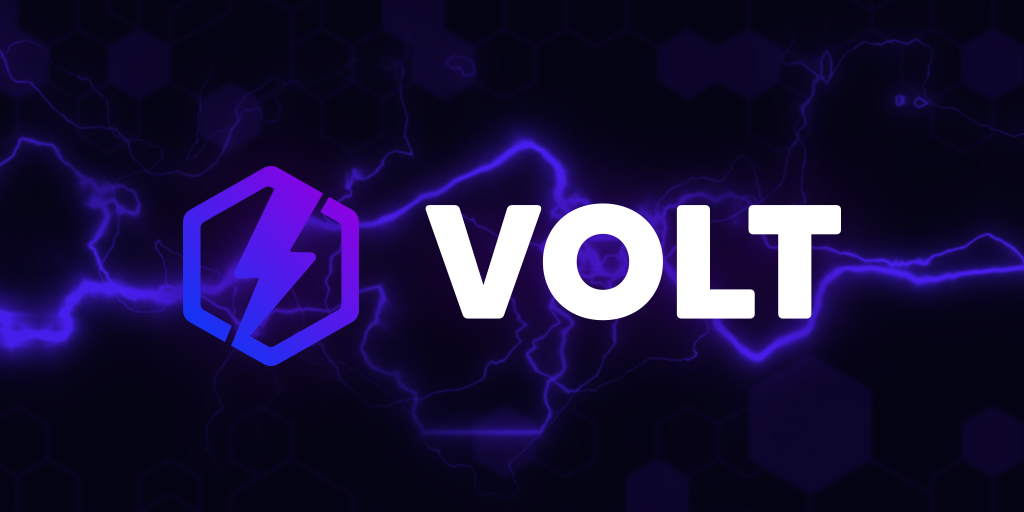
Volt is a smart wallet solution on $ICP. Every user gets their own canister (technical view)
But in reality, think about it less like a wallet and more like the center of an entirely new ecosystem of amazing Web3 products
Here's why the Volt ecosystem is going to be massive⚡️👇
But in reality, think about it less like a wallet and more like the center of an entirely new ecosystem of amazing Web3 products
Here's why the Volt ecosystem is going to be massive⚡️👇

Smart contract wallets have been around a long time, and exist on many chains, but we're just barely starting to scratch the surface on what they can do on the #IC.
Smart wallets might be hard to understand for non-technical folks, but trust me, they are going to be the future.
Smart wallets might be hard to understand for non-technical folks, but trust me, they are going to be the future.
A smart wallet is exactly as it sounds, a "smart" wallet. A wallet that can do more than a normal wallet. A supercharged wallet. A wallet with superpowers.
Combine that with the smart contract capabilities on #ICP, and you can basically do anything.
Combine that with the smart contract capabilities on #ICP, and you can basically do anything.
On top of that, Volt is meant to be extendable
Volt interacts with an offers canister, enabling binding offers on Entrepot, and an auctions canister, enabling auctions on Entrepot (all in native ICP)
But these are just two examples of the 1000s of services that could be created
Volt interacts with an offers canister, enabling binding offers on Entrepot, and an auctions canister, enabling auctions on Entrepot (all in native ICP)
But these are just two examples of the 1000s of services that could be created
So what happens when you take an extendable smart wallet solution and pair it with all powerful smart contracts on the #IC?
You guessed it. Phenomenal cosmic powers.
You guessed it. Phenomenal cosmic powers.
Now let's dive into how this enables a new ecosystem of products.
Volt is a canister, including a frontend. You are the owner, so you could use any existing wallet solution to login to your canister frontend as the owner and make changes to your wallet/app ecosystem setup.
Volt is a canister, including a frontend. You are the owner, so you could use any existing wallet solution to login to your canister frontend as the owner and make changes to your wallet/app ecosystem setup.
In many ways this is similar to the iPhone. Go to the app store. Download apps that provide additional functionality. Pay for apps if they cost money. Pay subscriptions if they have a recurring cost
Except fully decentralized, low fees, not controlled by Apple, etc
Except fully decentralized, low fees, not controlled by Apple, etc
This also provides opportunities for IC developers to build and monetize Volt apps that add needed functionality to the ecosystem.
Want to build an Entrepot NFT floor watcher? Integrate it into the Volt ecosystem for access and distribution and charge a nominal recurring fee
Want to build an Entrepot NFT floor watcher? Integrate it into the Volt ecosystem for access and distribution and charge a nominal recurring fee
So a Volt wallet is really just a smart contract, or canister, that is deployed on geographically distributed independent nodes running the Internet Computer Protocol. It is a "cloud" computer that is your very own, with eventually a thriving ecosystem of dApps to integrate.
And when you start to think about Volt more like a computer and less like a crypto wallet, that's where things get really exciting.
Login with any existing wallet or identity service, easy frontend access to your Volt computer (smart wallet), easy to install dApps.
Login with any existing wallet or identity service, easy frontend access to your Volt computer (smart wallet), easy to install dApps.
I'm envisioning:
1. Amazing UX - login w/ email, social/account recovery, pay with USDC/credit card
2. No code dApp integrations
3. True digital ownership (no one else can alter or modify your canister in any way)
4. Permissionless - create as many as you want
5. Easy storage
1. Amazing UX - login w/ email, social/account recovery, pay with USDC/credit card
2. No code dApp integrations
3. True digital ownership (no one else can alter or modify your canister in any way)
4. Permissionless - create as many as you want
5. Easy storage
So this is the big ambitious vision for the Volt ecosystem.
Plus subscription payments, safe crypto transfers, trading, bundling assets together to sell/trade, staking platform, and all sorts of other ways to use authorizations and micro-services to solve problems.
Plus subscription payments, safe crypto transfers, trading, bundling assets together to sell/trade, staking platform, and all sorts of other ways to use authorizations and micro-services to solve problems.
I know that
Volt | Smart contract wallets | Canister-based wallets
| your very own cloud computer
is a new concept, so please reply with any questions. Would love to hear what you think.
If you are dev, we'll release open source soon so you can play around with it.
Volt | Smart contract wallets | Canister-based wallets
| your very own cloud computer
is a new concept, so please reply with any questions. Would love to hear what you think.
If you are dev, we'll release open source soon so you can play around with it.
• • •
Missing some Tweet in this thread? You can try to
force a refresh






